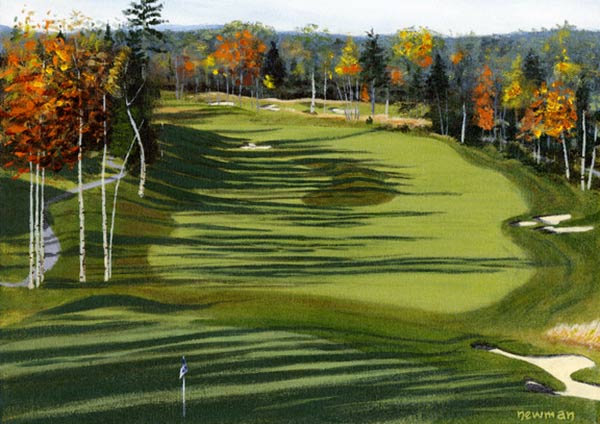Yes, golf courses are heavily manipulated landscapes, but they also are catnip for artists. “They seem to have unique features,” points out painter R. Gregory Summers. “These landscapes are thought out by some of the best designers in the world. If they don’t catch your eye, then they are doing something wrong.”
Lead Image: “The 10th at The Lynx at Kingswood Park,” by Bruce Newman, acrylic, 11 x 14 in.
Summers usually paints the wild landscape — and that may be one of the reasons he also likes painting golf courses. Contrast. “When I actually get on the course, it’s not the well groomed lawns that I paint,” says the Kansas artist. “It’s mostly the rough, or ‘out of bounds,’ areas that I go for. Sure, the pristine grounds with properly spaced trees and rocks look great in photos, but everyone knows it’s the unkempt, untended and falling-down things that pique the artist’s interest.”
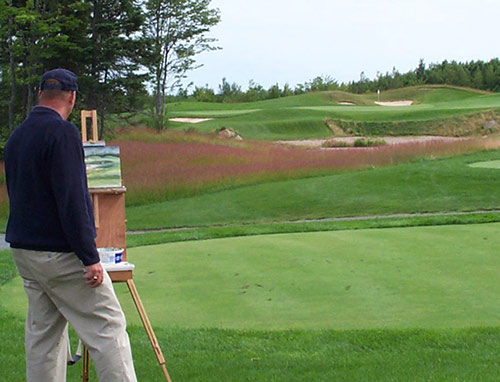
Canadian painter Bruce Newman very much approaches a golf-course painting. “I come to it first as a painter — I see what’s before me, what my composition would be,” he says. “Once I’ve settled on the composition, then I start thinking as a golfer. This all just flows from my background.” Newman played competitive golf five times a week for 25 years. He won several amateur championships and was a professional golfer for four years. His handicap has been in the negative numbers and still remains around 3. He has played at many of the most storied golf courses in North America.
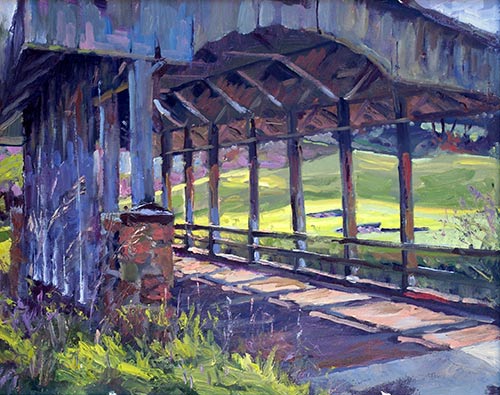
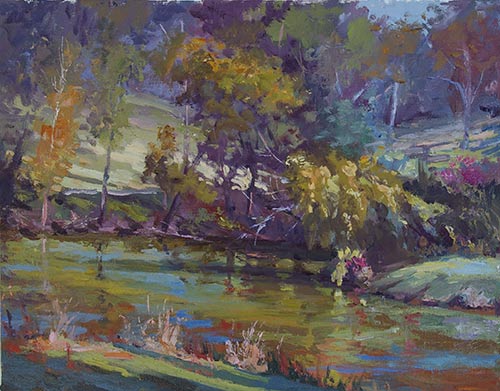
A golfer sees a hole differently. She or he notes the various grass types, the way the light indicates a slope, and the amount of dew, which would slow down a ball. This all translates into a more accurate portrait of the landscape, even when it is painted somewhat loosely.
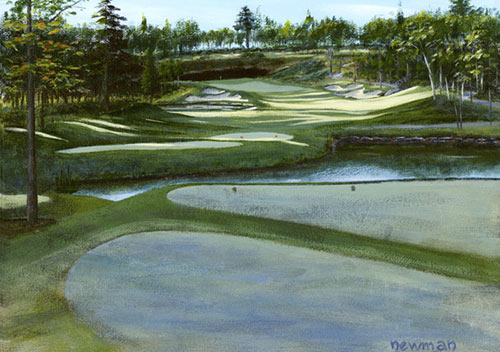
Newman says he juggles a number of factors when picking his painting spot. “I have to see if I am showing the hole the best way,” he says. “Because of the length of the hole, it might be hard to show it all. Sometimes I paint from the second shot to get a better design and better view of the hole. At that point I approach the painting like a golfer would. I paint my perspective on the hole. How I would approach playing the hole?”
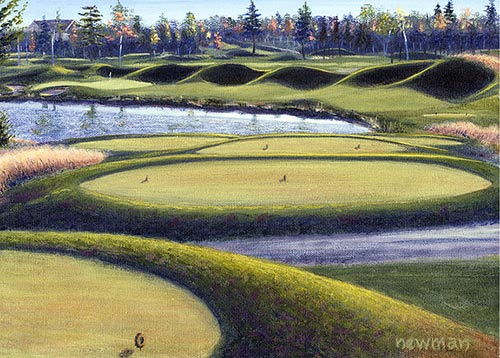
Summers and Newman — along with several other artists — shared more thoughts on painting golf courses. Look for a feature story on the topic in an upcoming issue of PleinAir magazine.

